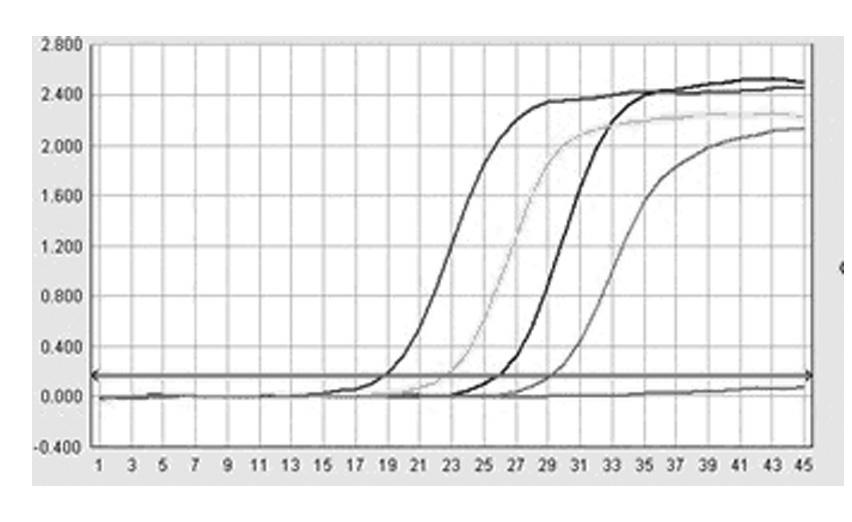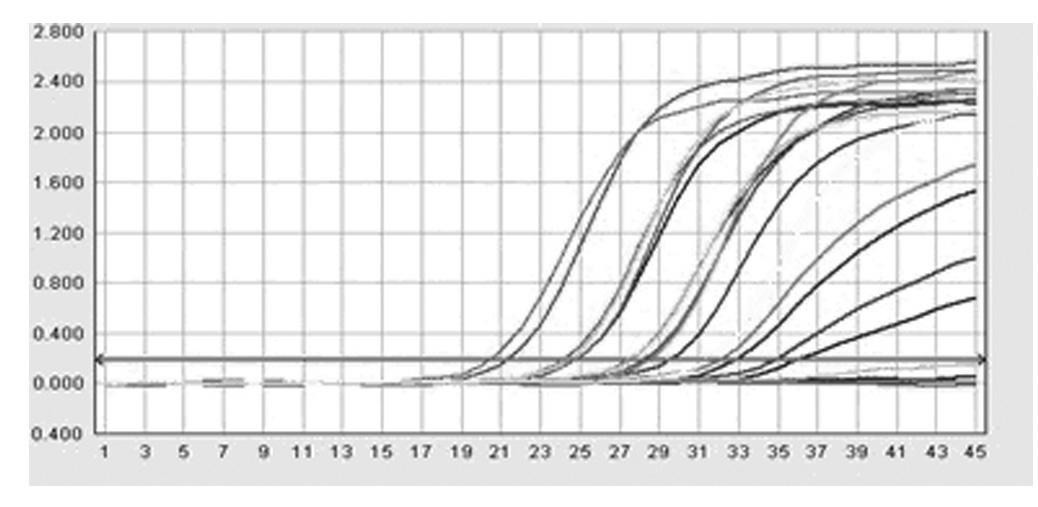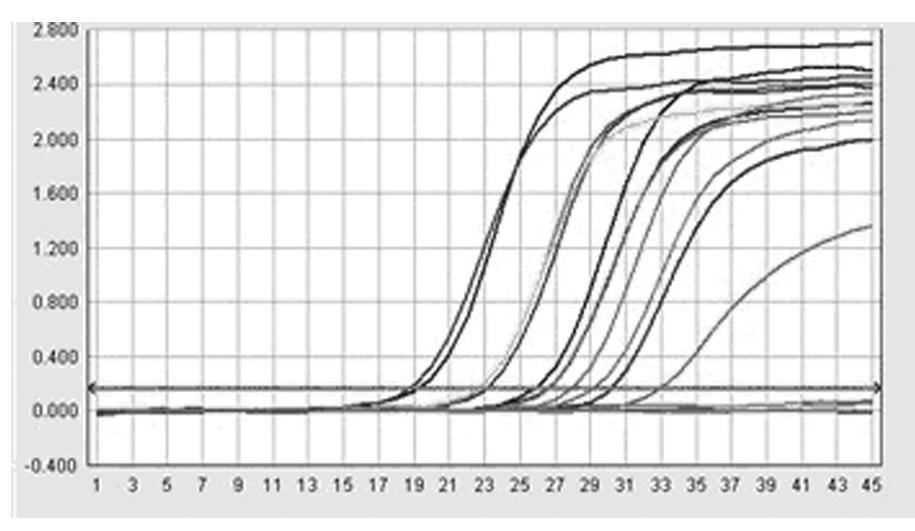Method for detecting nucleic acid of porcine reproductive and respiratory syndrome virus in one step
A porcine PRRS virus and nucleic acid technology, which is applied in biochemical equipment and methods, microbe measurement/inspection, fluorescence/phosphorescence, etc., can solve the problems of non-degradable RNA preservation, difficult promotion, rapid detection of epidemic diseases, etc., and achieve sample collection Convenience, improved detection sensitivity, and reduced risk of contamination
- Summary
- Abstract
- Description
- Claims
- Application Information
AI Technical Summary
Problems solved by technology
Method used
Image
Examples
Embodiment 1
[0028] (1) Sample collection and processing
[0029] (1) Spotting: Collect venous blood from the ear veins of pigs with PRRS, pipette 100ul of blood, and drop the blood into the marked circle of the FTA card in a concentric circular motion. The samples were allowed to dry for approximately 1 hour at room temperature. Store the samples in a clean protective bag in a cool, dry environment at room temperature for 0-9 days.
[0030] (2) Sampling: Punch down the entire sample plate in the sample area of the FTA card with a puncher, and put the plate into the PCR amplification tube.
[0031] (3) Incubation: Add 400μL RNA processing buffer (10mM tris-HCl, pH 8.0, 0.1mM EDTA, 200μg / mL glycogen and 2mM dithiothreitol), and pipette up and down twice. Cover and incubate on ice for 15 min, mixing every 5 min.
[0032] (4) Purification: add 40ul 3M sodium acetate (pH5.2) and 400ul ice-cold isopropanol to precipitate RNA from the washing solution; incubate at -20°C for 1 hour. Place t...
Embodiment 2
[0041] Example 2: Comparing the difference between FTA card room temperature storage and processing samples and traditional freezing method storage and processing samples
[0042] Method 1: Take venous blood from pigs with PRRS, store it in FTA card, separate and purify the viral nucleic acid from the FTA card, and detect the PRRS virus nucleic acid by real-time fluorescent RT-PCR.
[0043] 1. Collect venous blood from the ear vein of pigs with PRRS disease, pipette gun to draw 100ul of blood, and drip the blood into the marked circle of the FTA card in a concentric circular motion. The samples were allowed to dry for approximately 1 hour at room temperature. Store the samples in a clean protective bag in a cool, dry environment at room temperature for 7 days.
[0044]2. Punch down the entire sample plate in the sample area of the FTA card with a hole puncher, and put the plate into the PCR amplification tube. Add 400 μL RNA processing buffer (10 mM Tris-HCl, pH 8.0, 0.1...
PUM
 Login to View More
Login to View More Abstract
Description
Claims
Application Information
 Login to View More
Login to View More - R&D
- Intellectual Property
- Life Sciences
- Materials
- Tech Scout
- Unparalleled Data Quality
- Higher Quality Content
- 60% Fewer Hallucinations
Browse by: Latest US Patents, China's latest patents, Technical Efficacy Thesaurus, Application Domain, Technology Topic, Popular Technical Reports.
© 2025 PatSnap. All rights reserved.Legal|Privacy policy|Modern Slavery Act Transparency Statement|Sitemap|About US| Contact US: help@patsnap.com



